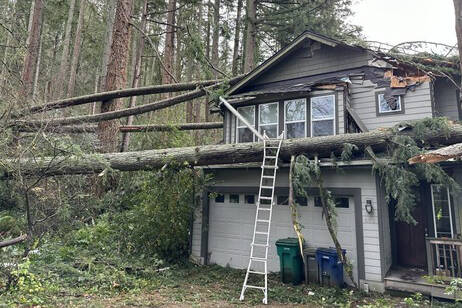Check out the competition the next time you go to a Sunday open house. You’ve got your dual-income yuppie couples, your speculative types looking to paint and flip, families upsizing or downsizing to meet their needs, maybe a few gay and lesbian partners searching for their own little patch of Wallingford—Seattle’s diversity in a nutshell. But who’s that woman over there inspecting the furnace system? The one without a wedding ring on her finger. Who’s she with?
Herself. According to estimates from the National Association of Realtors (NAR), the number of single women home buyers has doubled nationally since 1989. Some 21 percent of home sales now fall into this category, up from 18 percent in 1997. And here’s an even more fascinating stat: Single men are way behind—only 11 percent of home sales in 2002 (the most recent year for such data). Single women are almost twice as likely to buy their first home than single men, and they’re the fastest growing segment of home buyers the NAR studies. A recent report from Harvard’s Joint Center for Housing Studies says that unmarried women accounted for 30 percent of overall homeowner growth between 1994 and 2002.
The curve is likely to get even steeper in the years ahead. The percentage of women in the workplace has grown ever higher since World War II, accelerating particularly during the ’70s. Divorce rates, delayed marriage, and longer life expectancy all contribute to some of those same women living alone. And nationally, regardless of sex, more and more people live alone—most notably in urban areas. Here in Seattle, the percentage of single-person households—men and women, renters and owners—stands at around 41 percent, as compared to 26 percent state- and nationwide.
Another interesting trend the NAR has discovered is that women make 47 percent of all condominium purchases. Meaning nearly half those new buildings going up along First Avenue may be filled with women who are single. And affluent. Those swank high-rises don’t come cheap—indicating the increased power of the purse, particularly for professional women without dependents. Downtown Seattle’s condo boom is well suited to those women who don’t need—or can’t afford—a big house with a big yard to tend and gutters to clean. Proximity to downtown offices, shops, and restaurants can’t hurt, either.
At the same time, there’s been considerable condo development south of the city in the sub-$200,000 range to serve the lower end of the market. A single paycheck, after all, is still a single paycheck. Analysis of recent Federal Reserve Board data on consumer finance reveals women-headed households have about one-half the income and less than one-third the wealth as other American households. And wealth is often composed largely by the equity in one’s house—another indication that women have been historically house poor when living alone.
Still, the NAR data are encouraging: Single women have long lagged behind in home ownership, and they’re catching up fast. Affordable housing may be in scarce supply in Seattle, but there’s no scarcity of women in the market. Don’t be surprised if one outbids you at that next open house.








